Like any other feast day in Italy, Easter Sunday lunch has its traditional recipes.
Lots of dishes are common from North to South but we must not overlook that in each location they are prepared differently and take different names. Thus, tradition cuisine shares common traits but peculiarities emerge from region to region.
So what are the specialties that cannot be missed on the Easter Sunday lunch menu in Italy?
The specialities of the Easter Sunday lunch menù in Italy
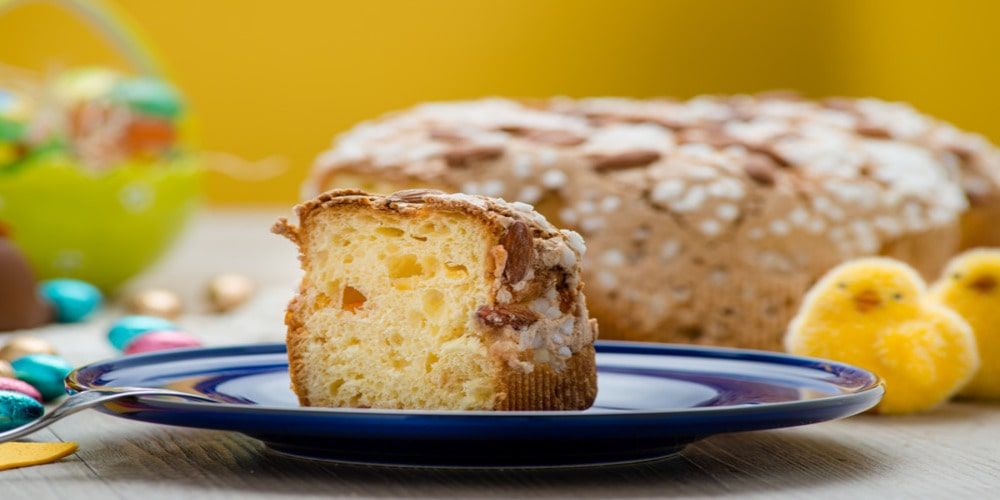
The unmissable recipes on the Italian tables at Easter generally belong to the classic gastronomic repertoire and have been handed down for generations. Some examples? Homemade pasta, hard-boiled eggs, savory pies, lamb, the ever-present colomba cake.
Many ingredients symbolize both sacred and secular rituals, such as lamb and eggs, but also spring and the awakening of nature such as artichokes, asparagus, chard, and generally available veggies in this season.
Abundance, as for every festivity, is the main rule to follow in this spring-scented menu - and if anything should be advanced from Sunday lunch, no problem: the leftovers will be fine the next day, on Easter Monday, for the usual Pasquetta picnic!
If your mouth is already watering and you are looking for inspiration, let's discover together 20 traditional recipes for Easter Sunday lunch menu in Italy for each region.
1. Abruzzo, Agnello ‘cac'e ove’
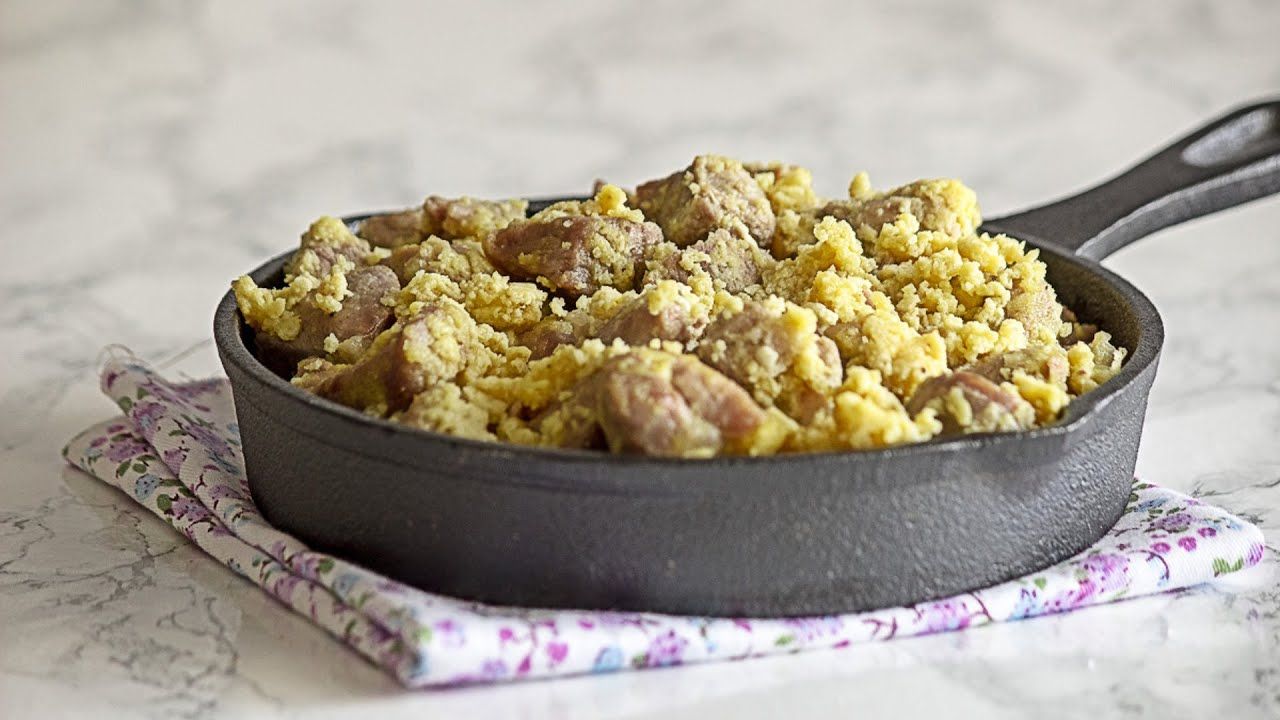
The Lamb is the quintessential symbol of Easter according to a tradition dating back to the time of the Hebrews, who celebrated the night when God delivered them from Egypt with the sacrifice of a lamb. With the advent of Christianity, the lamb became one of the most important symbols of the religion because it is considered a symbol of Jesus, the Lamb of God.
Lamb, a symbol of sacrifice and salvation, is one of the most delicious dishes in Easter cuisine and is cooked in a thousand different recipes.
Agnello 'cac'e ove', lamb with pecorino cheese and eggs, is a typical preparation of Abruzzo cuisine: it is a lamb stew browned in oil, garlic and rosemary to which a sauce made by beating eggs with pecorino cheese and lemon juice is added, with the fire out.
19. Basilicata, Easter bread or 'U tortn'
On Easter Day in many regions of Italy leavened breads or pies are eaten. They are prepared days in advance because they require long rising times and may not be touched until Easter morning when a large breakfast marks the end of Lent.
In Basilicata, Easter Bread or 'U tortn' is prepared, a soft oil bread doughnut scented with fennel seeds and enriched with eggs and lard and baked in the oven, to be eaten alone or to accompany cold cuts and cheeses, as an appetizer for Easter lunch or for the Easter Monday picnic.
18. Calabria, 'Cuzzupe'
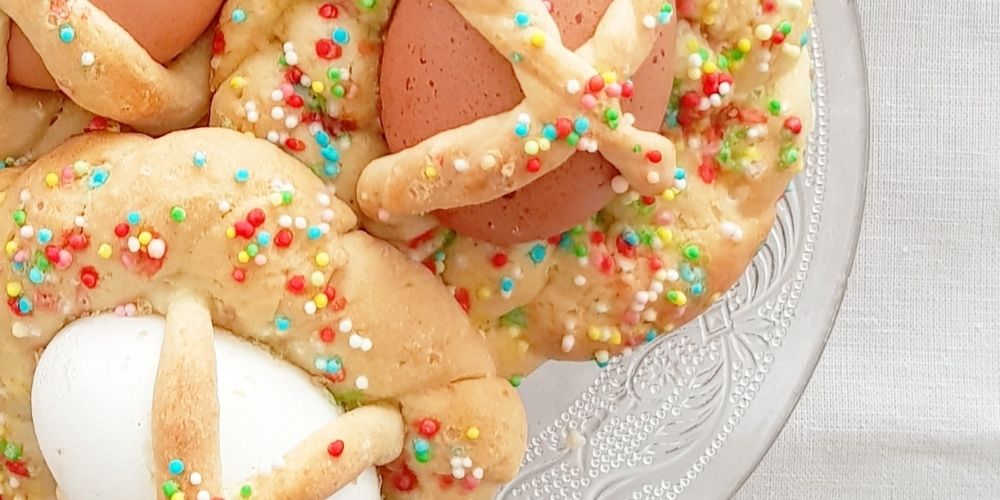
An Italian Easter tradition is to take eggs to church for a blessing, and then eat them at Easter breakfast or use them in cooking in sweet or savory recipes.
Cuzzupe, or cuddure (the dialect name changes depending on the area) from Calabria are Easter pastry cakes baked in the oven that symbolize the end of the fast of Lent. They have different shapes recalling Easter symbols such as a bell, a dove and a lamb; they also have, as a symbol of Resurrection, a hard-boiled egg in the center, which traditionally brings good luck.
They are garnished with white naspro (a mixture of egg white, sugar and lemon juice) and colored sprinkles.
17. Campania, the queen of Easter table
Here's the Queen of Easter desserts: the pastiera.
There are many legends about the origins of the pastiera, like most Neapolitan desserts, but it almost certainly originated in the 16th century in a convent, from the hands of nuns who prepared them for the aristocratic families of the city.
It is a shortbread cake to be baked in the oven with a special filling of cooked wheat, ricotta cheese, chopped candied fruit, eggs, orange and lemon peel, orange blossom water, cinnamon, milk and sugar.
Furthermore there are rumors of a legend behind the number of strips of pastry that cover it, that must be 7 like the gifts that Neapolitans offered every spring to the mermaid Parthenope.
16. The tardura from Emilia Romagna
In Romagna, Easter is celebrated by preparing Tardura, a broth soup of humble origins, simple and genuine, but nonetheless very tasty.
In the Romagnolo dialect it means 'straining' because the ingredients are kneaded using a fork, then the dough is 'strained' through the fork's tines.
You need to make an excellent meat stock in advance, then the preparation of the pasta can begin: in a bowl beat the eggs then add breadcrumbs, grated Parmesan cheese, a pinch of salt, lemon peel and nutmeg.
Finally pour the mixture into the simmering broth and, turning with a fork, it will magically break up into many scrambled bits!
Cook for a few minutes, and voilà: theTardura is ready to be enjoyed hot with a sprinkling of Parmesan cheese.
15. Friuli Venezia Giulia, 'Cjarsons'
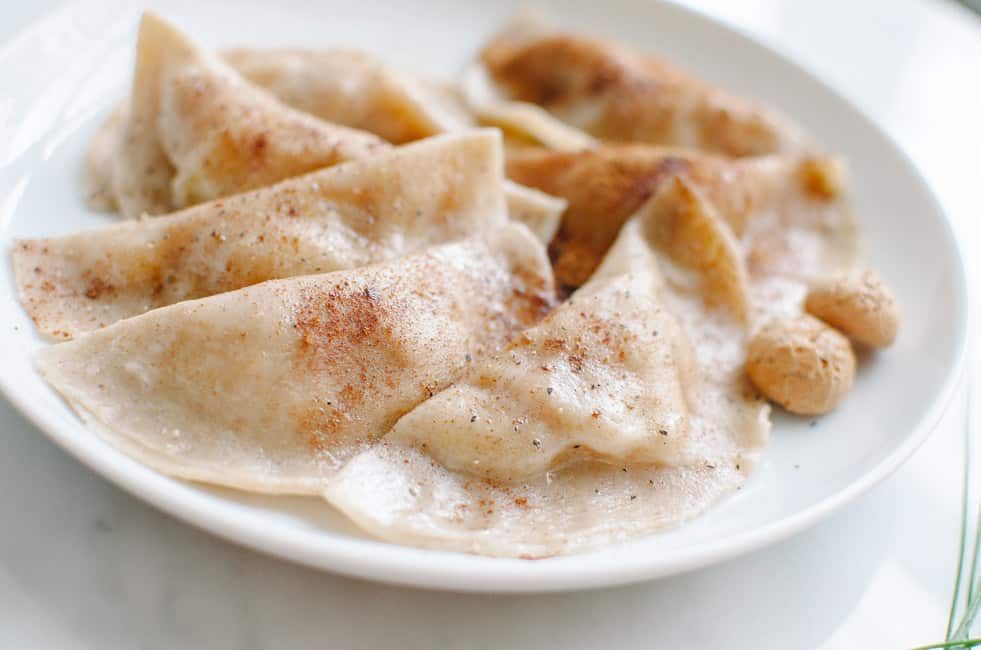
The cjarsons are the typical filled pasta of the Carnia region being the dish of Easter celebrations since 1377!
Theirs is a poor cuisine recipe, prepared with what humble people had at home with a mixture of sweet and savory ingredients that give cjarsons a very special taste: in fact, the filling of the pasta contains potatoes, chard and ricotta cheese along with cocoa and cinnamon powder.
Cook them in boiling water, then served with the morchia, melted butter and toasted cornmeal, and sprinkle with plenty of grated cheese.
14. Lazio, Abbacchio alla Romana
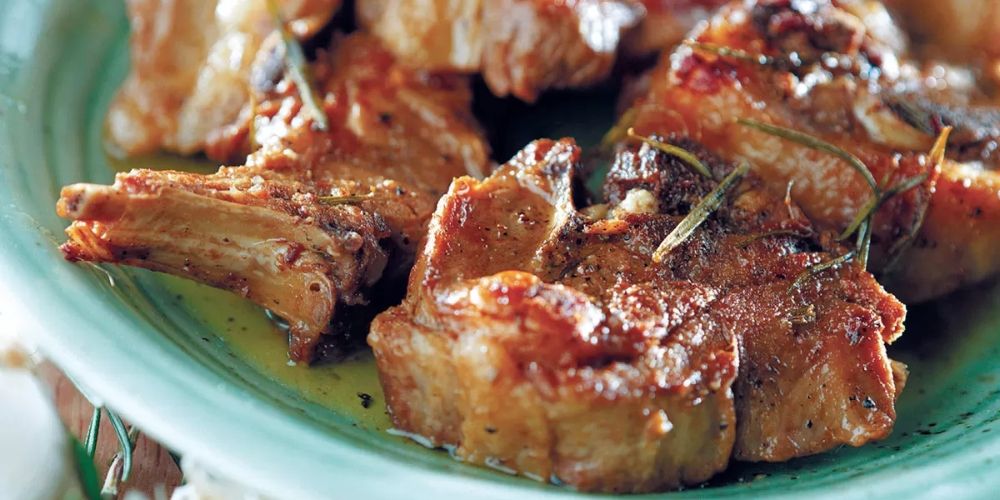
Among the Easter recipes featuring lamb, the one from Rome is maybe the most famous.
It is called Abbacchio, the baby lamb, and it is a typical culinary tradition of Roman Easter: it was originally considered a poor dish because the meat was considered cheap, but as frequently happens, it has become one of the most important dishes of regional gastronomy.
To prepare the Abbacchio alla romana, meat should be cut into pieces, put in a pan with sage, rosemary, garlic, oil, salt, pepper and white wine and cooked in the oven. A flavorful sauce made of anchovies and pot herbs is added before serving.
13. Liguria, Torta Pasqualina
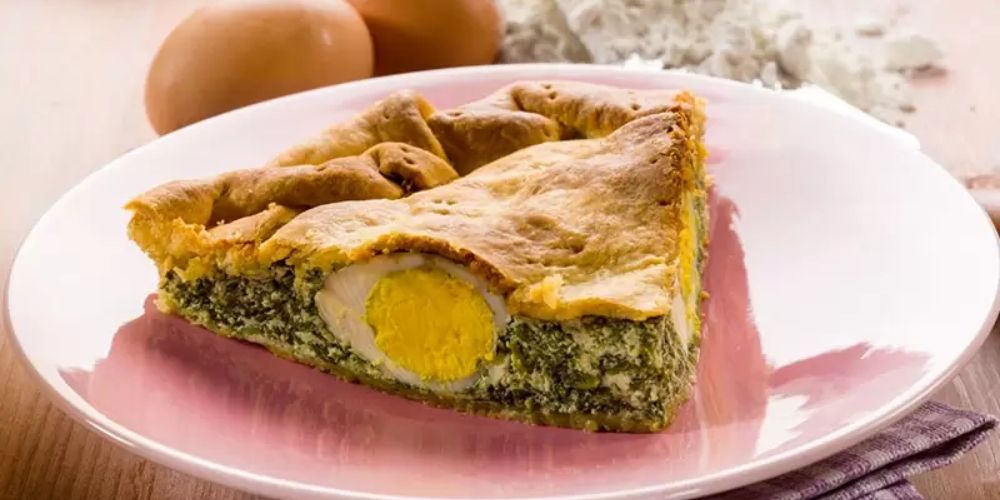
The Torta Pasqualina is a savory pie of Genoese origin that dates back to the 16th century, among the protagonists of the Easter Sunday lunch menu in Italy.
As its name suggests, it is a typical Easter recipe, prepared to celebrate the awakening of Spring, too.
Its peculiarity is that the pastry sheet enclosing the filling is made up of 33 layers symbolizing the years of Christ, and it's stuffed with green-leaf vegetables or artichokes, hard-boiled eggs (that give its distinctive appearance when you cut the pie into slices), marjoram and prescinseua a particular fresh cheese typical of Liguria with a sour flavor.
Great to be enjoyed with a good glass of Ligurian white wine, even on the next day at the Easter picnic!
12. Lombardia, Torta paesana
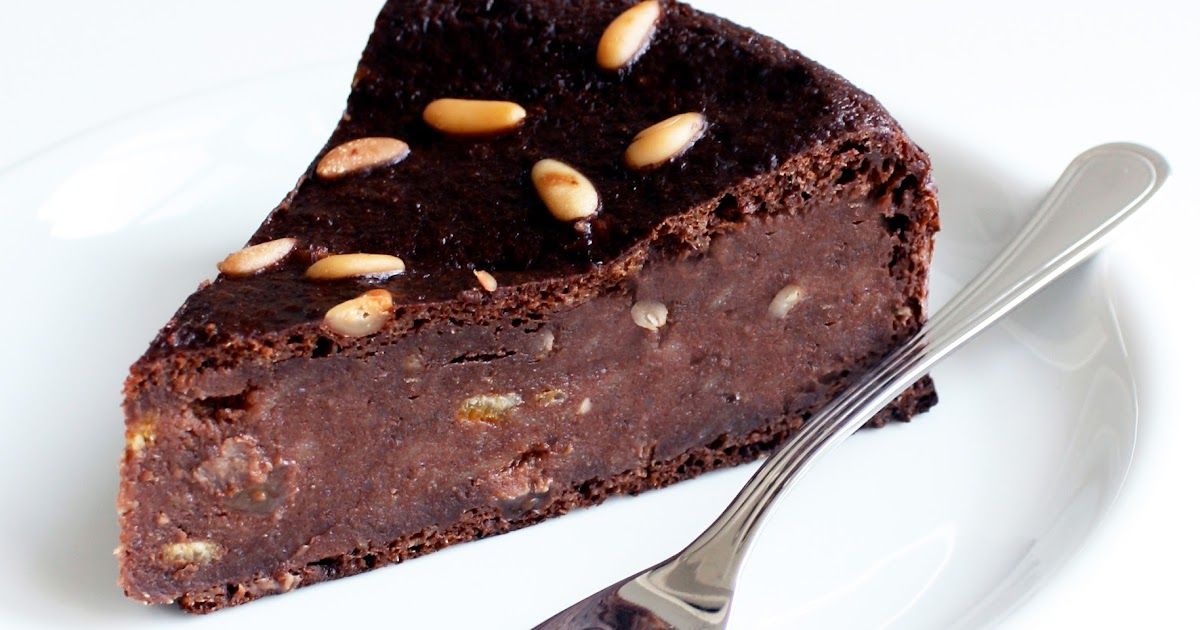
The Torta paesana or Turta dei paisan, the peagent cake, has humble origins and it is typical of some areas of Lombardy.
The recipe varies from village to village and also takes different names depending on where it is made: bread cake, milk cake, black cake. It is handed down from generation to generation and each family has its own secret ingredient to enrich the dough with.
It is a cake made from stale bread soaked in milk to which amaretti biscuits, pine nuts, raisins, sugar and cocoa are added and then baked in the oven. During the Easter season it is made in the shape of a bell.
11. Marche,the Easter Breakfast

In some regions of central Italy, like in the Marche, Easter morning is celebrated with a hearty sweet and savory breakfast, a kind of brunch, representing the end of Lent and fasting and the celebration of the return to life.
The table is set with hard-boiled eggs, blessed during Easter Mass and a symbol of the Resurrection; surely, you cannot miss a dish with artichokes and coratella, i.e. the innards browned in extra virgin olive oil and deglazed with white wine; next the cured meats accompanied with the crescia di Pasqua, a kind of leavened cheese bread. Finally the desserts! the sweet Easter pizza and the lamb-shaped shortbread cake, stuffed with chocolate, eggs, chopped almonds, sugar and candied fruit.
10. Molise, the Pigna
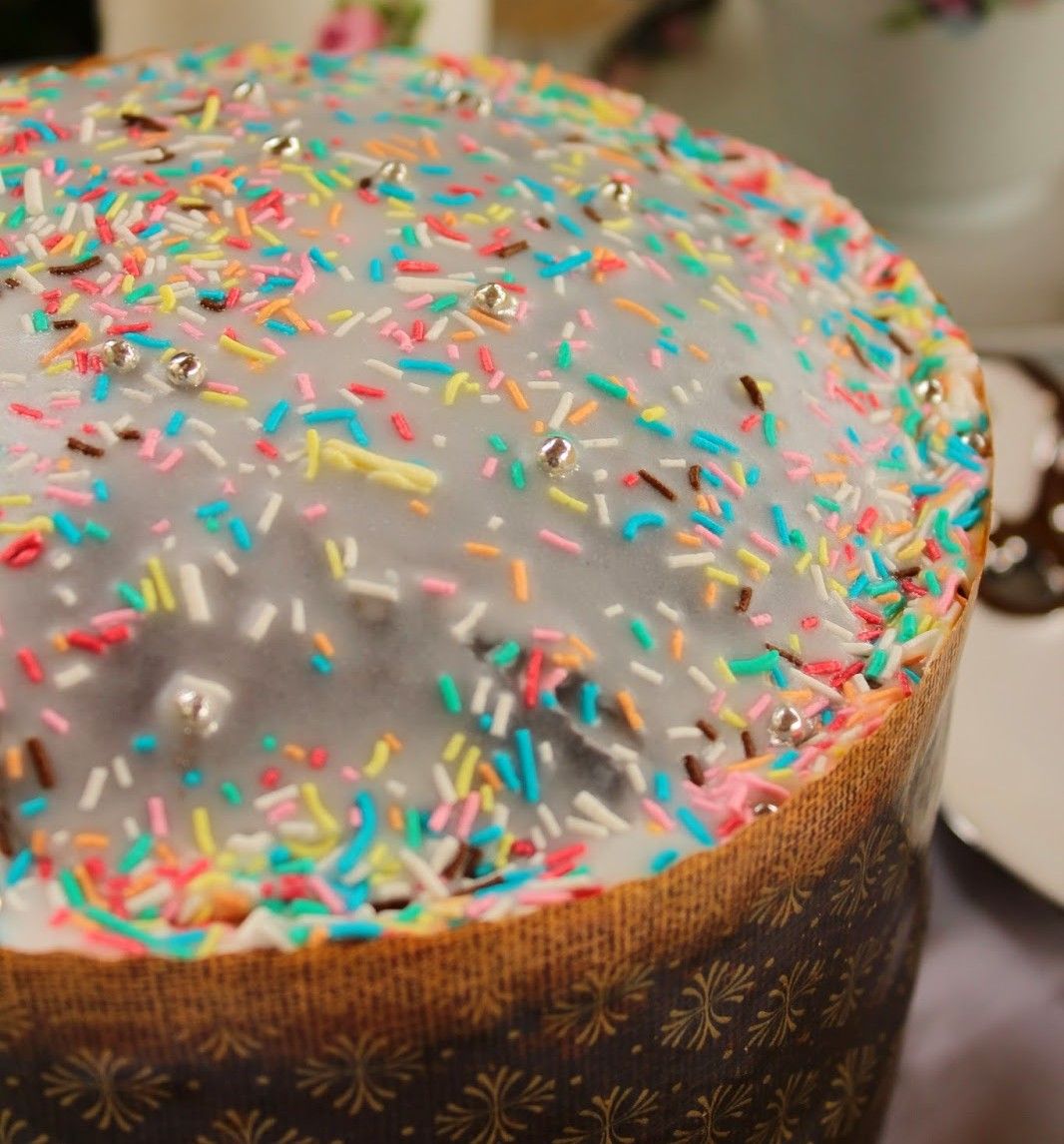
During Easter, many traditional dishes are prepared days in advance because they take a long time to prepare, such as the Pigna.
The Easter Pigna is the typical traditional dessert from Molise. Its original recipe is quite ancient and is characterized by the slow leavening that takes 3 days, symbolizing the Death and Resurrection of Jesus.
The shape is similar to the on of the panettone and is made with flour, lard, sugar, eggs, yeast, anise liqueur and grated lemon peel. It differs from other southern Italian versions by the addition of boiled potatoes in the dough, which makes it even softer. On the outside it is decorated with sugar icing and colored sprinkles.
9. Piedmont, braised beef with Barolo
Brasato al Barolo is a typical recipe of Piedmontese cuisine for special occasions like Easter. It is a Fassona roasted beef braised in Barolo, the prized red wine.
The word 'braised' comes from the dialect word 'brasa', which means embers, in fact originally the pot with the meat was placed on the coals and cooked for hours to obtain a soft and succulent meat.
Before cooking, the meat has to be marinated for a long time in Barolo to tenderize it along with celery, carrots, onions, juniper berries, cloves and cinnamon and is then cooked in the same liquid for several hours over low heat.
Once ready, Basato al Barolo can be served with polenta or mashed potatoes.
18. Puglia, the almond paste Lamb
The Agnello di pasta di mandorle, the almond paste Lamb, is a typical dessert in the Easter Sunday lunch menu in Italy, in some southern regions like Apulia. It has ancient origins and is most likely due to the cloistered nuns who made almond pastries in convents. Then, over time, it became part of the pastry tradition in these areas and beyond.
It is a mixture of almond paste, sugar and honey in the shape of a crouching lamb and filled with sponge cake soaked in liqueur, jam and dark chocolate.
In the province of Lecce, the almond paste lamb is stuffed with a special cream, called faldacchiera, made of egg yolks and sugar, mixed with jam, candied fruit and chocolate pieces.
7. Sardinia, the pardulas
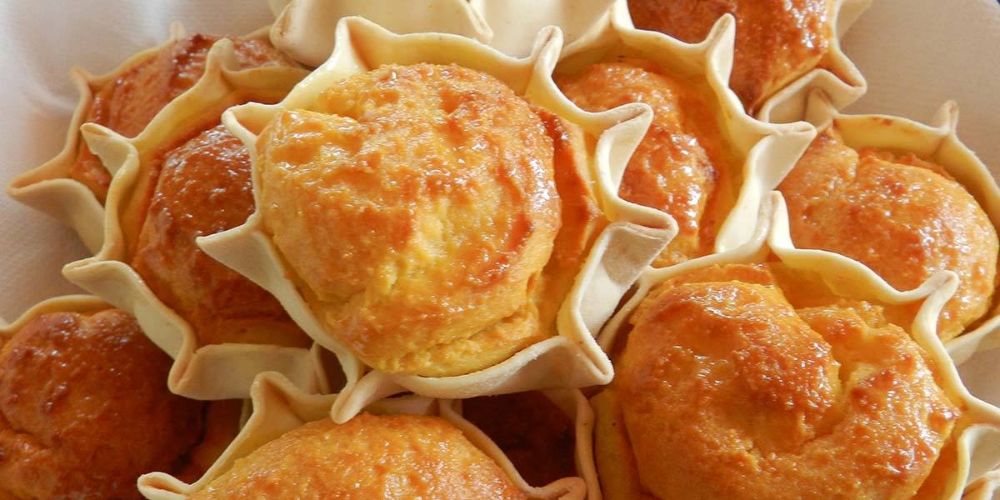
Pardulas (or casadinas) are typical Sardinian sweets consisting of a 'cup' of pinched dough and a filling of ricotta and lemon or orange and saffron flavoring, which gives them their typical golden color.
They have very ancient origins and most likely owe their name to their square shape they once had, when the pastry was sealed with four pinches on the edge in order to enclose the filling.
They are served with the island's typical liqueurs, such as myrtle, and there is also a savory version with goat cheese and mint.
6. Sicily, the Cassata
The Cassata has a place of honor among the typical desserts throughout Sicily and was created to celebrate Easter after the fast of Lent.
It is a dessert in which the contaminations of all the cultures that have inhabited Sicily come together: indeed, the name derives from the Arabic word 'Quas'at' which means "large, round bowl" then, during the Norman era, the nuns of the Martorana monastery added the typical green marzipan border; the Spaniards introduced the use of sponge cake and chocolate, finally in the Baroque period candied fruit was added.
Cassata is a very elaborate dessert, especially in the sumptuous decoration that covers it: the base of soft sponge cake is filled with a mouth-watering ricotta cream enriched with candied fruit and chocolate chips. The outer rim is made of green almond paste and the surface is covered with a thick sugar glaze and a rich candied fruit decoration.
5. Tuscany, 'Ramerino' bread
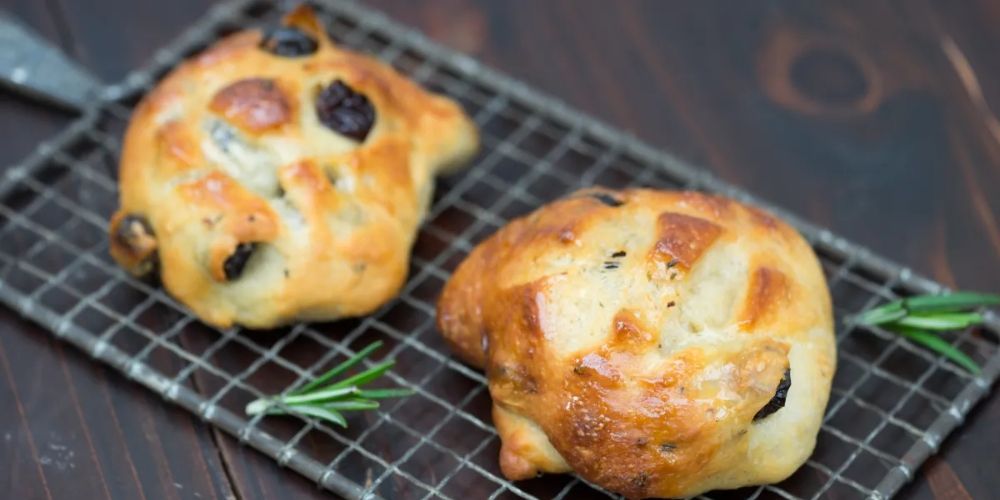
The Ramerino Bread is a small, sweet, shiny, golden-colored soft loaf of medieval origin named after "ramerino," an ancient 14th-century Tuscan word for the rosemary plant - which is the main ingredient, as well as the raisin.
Its origins are closely linked to religion and it has always been considered a bread of devotion, blessed during Holy Thursday mass. The first feature is the cross cut on the surface, used to help leavening and linked to a symbolic meaning like every ingredient that makes it up.
Traditionally it is eaten on Maundy Thursday as well as on Easter Day, alone or together with blessed eggs or as a side for cold cuts.
4. Trentino Alto Adige, asparagus and eggs
Easter comes with the awakening of Nature, and there are many first fruits that can be brought to the table.
In Trentino Alto Adige, Easter coincides with the time of white asparagus, which owes its uniqueness to the fact that it grows underground, thus the lack of sunlight prevents it to turn green.
They have a very ancient origin and are a 'fruit that brings rebirth, resurrection and fruitfulness'.
Highly prized with a tender and sweet taste, in cuisine they lend themselves to being prepared in many ways: one idea for an Easter dish is asparagus with eggs and speck, i.e. smoked salted meat typical of Trentino Alto Adige, to be enjoyed as a rich appetizer on a large slice of toasted bread or as a succulent main course.
3. Umbria, the Ciaramicola

Ciaramicola is a delicious ring-shaped cake prepared in many parts of Umbria, especially in the town of Perugia.
Its special feature is the red color of the dough, due to the bath with alkermes, a liquor usually used for cakes; on top it is decorated with a generous amount of white meringue, hard on the outside and soft on the inside, studded with colored sprinkles.
It has very ancient origins and is said to owe its name to the titmouse, a very colorful bird that heralds the arrival of Spring.
In the past this cake was brought as a gift by girls about to be married to their fiancés on Easter Day as a good omen.
The colors and decoration have always also symbolized the neighborhoods of the town of Perugia.
2. Aosta Valley, the 'crescia'
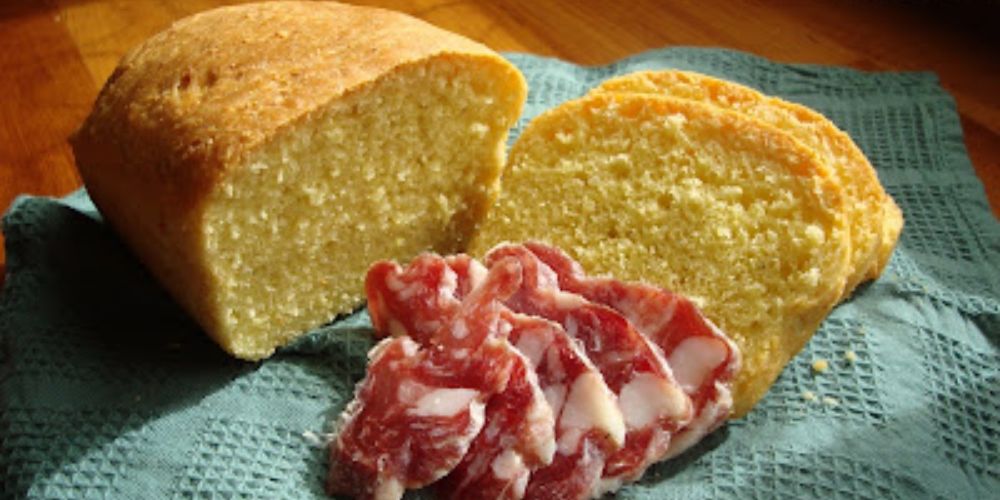
Easter Crescia is a very tasty savory cake from Aosta Valley, usually eaten during the Easter season.
The dough is similar to the savory cresce that are prepared in other regions of Italy; this cake is also made with aged cheeses, eggs and oil but the dough is softer because of the stiffly beaten egg whites. The shape is low and wide, like a ring-shaped cake.
It is excellent both hot and cold, eaten on its own or with cheese and cured meats, and is perfect both as an appetizer during Easter lunch and for the classic picnic on Easter Monday.
1. Veneto, the 'fugassa' (or glazed leavened cake)
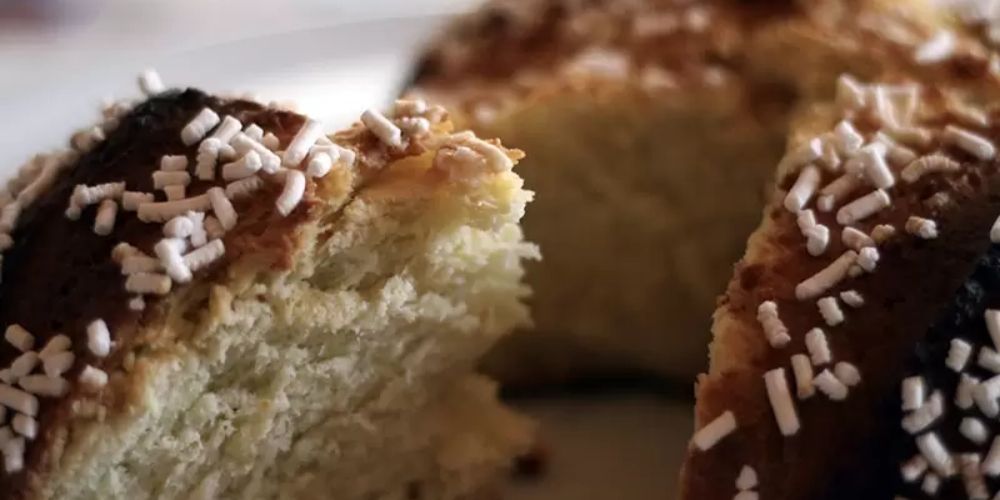
Fugassa veneta or fugassin is a leavened cake with a panettone-like shape. The recipe is very old; originally it was the dessert of poorer families who added some sugar to the bread dough, thus obtaining a sweet focaccia.
Over time it became a pastry dessert and the recipe was improved by adding other ingredients and flavorings.
Each area of the Veneto has its own recipe but the main ingredients are always flour, sugar, eggs, butter and yeast flavored with spumadoro, a citrus and turmeric flavoring widely used in the Veneto. The final step is glazing the top with granulated sugar.
Easter Sunday lunch menu in Italy: an open tradition
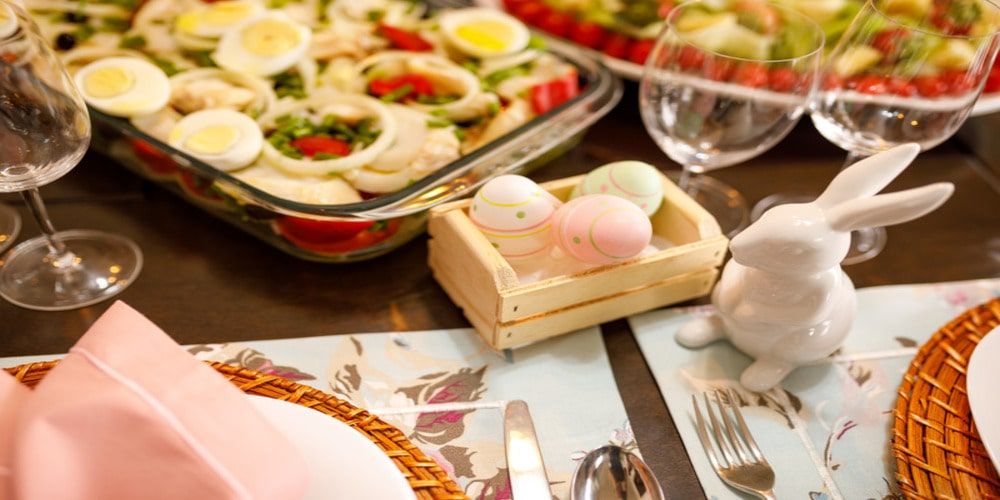
The 20 recipes we have just told you about are just a few among those you can admire on the Italian tables during the Easter holidays. Tradition is actually very rich and varied but above all open to further contamination.
Whatever your region, whether you want to keep to the classic repertoire or approach other flavors, the Easter Sunday lunch menu in Italy, with its specialties, will be able to please everyone, both young and old.
About the author
Written on 09/02/2024


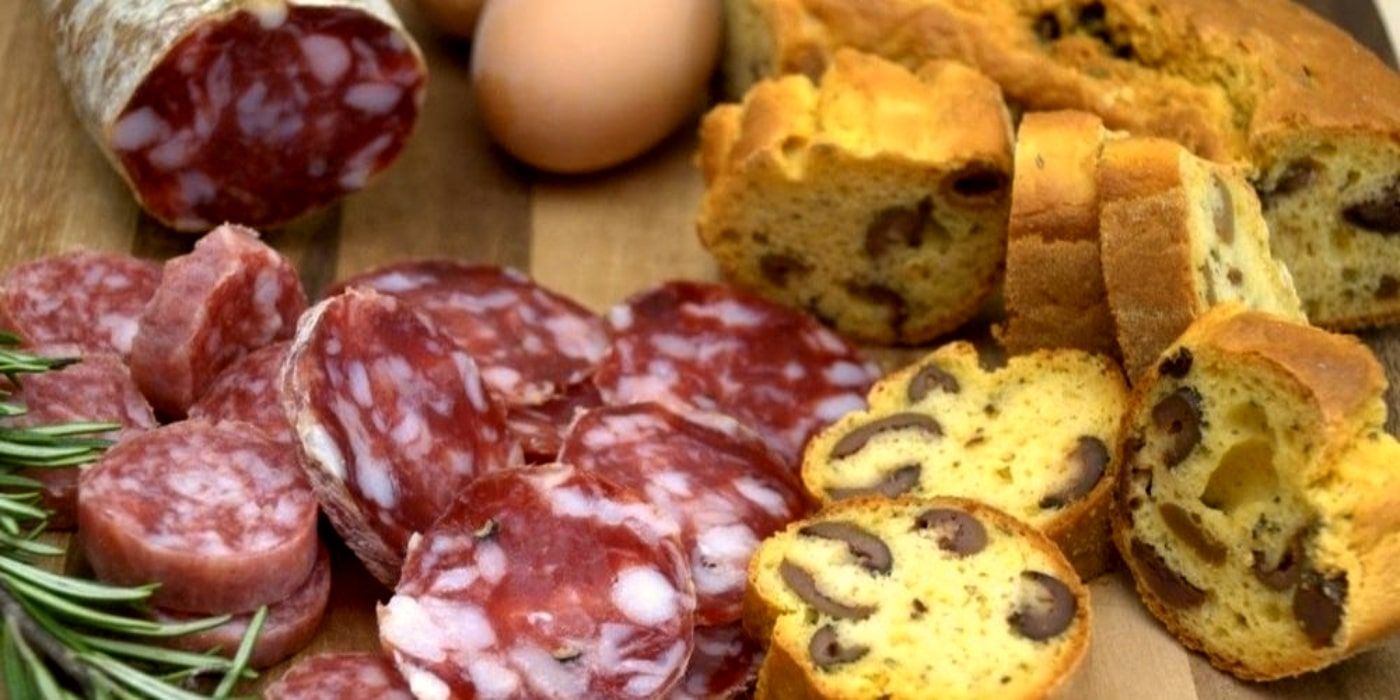
Mariateresa Bonanotte
What are the must-have dishes on the Easter Sunday lunch menu in Italy? Let's discover together the typical recipes of each region!